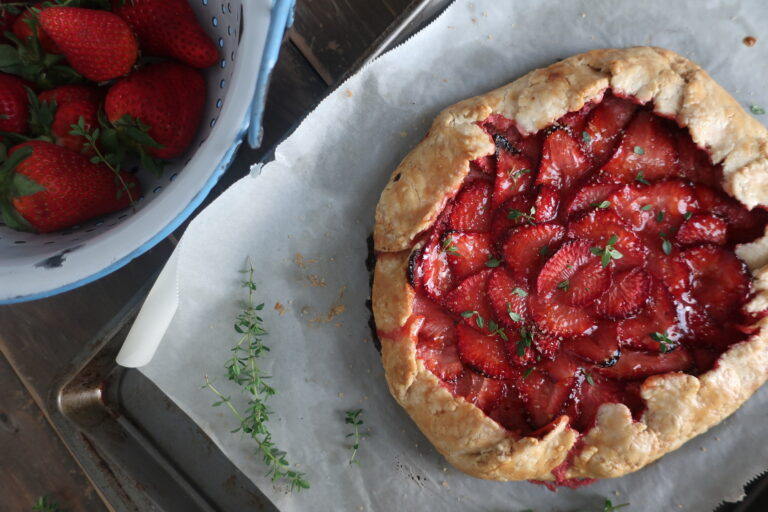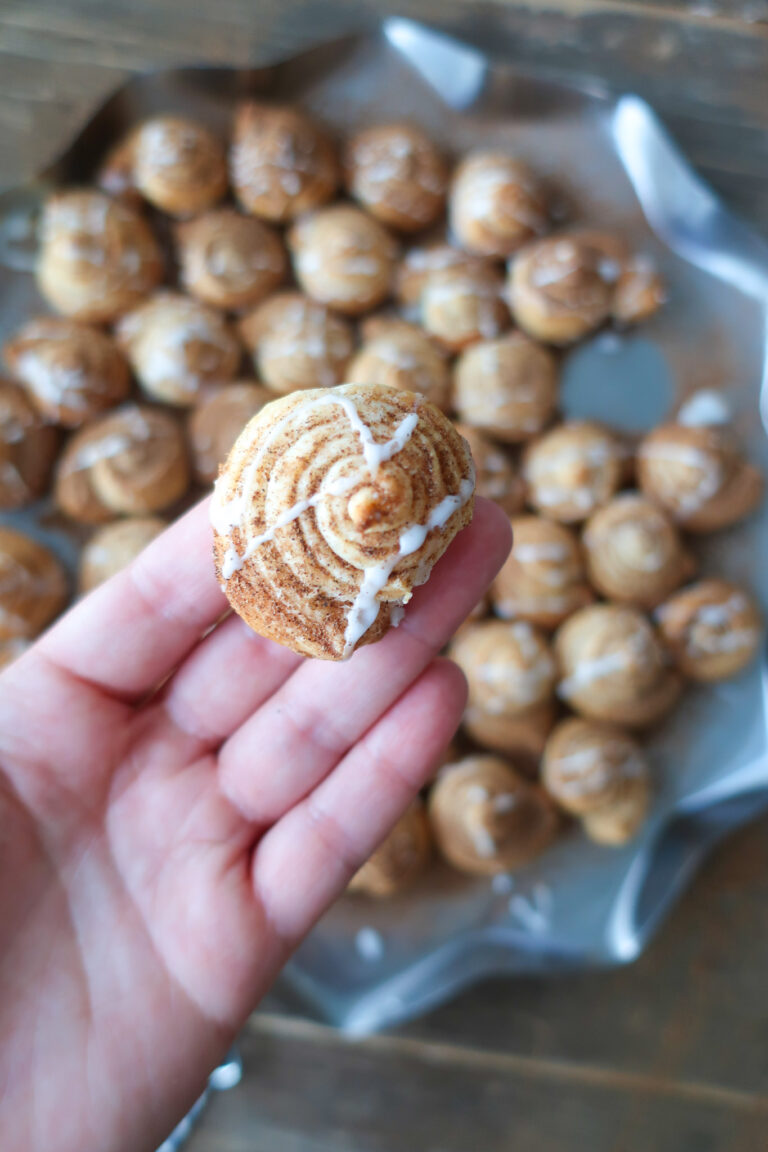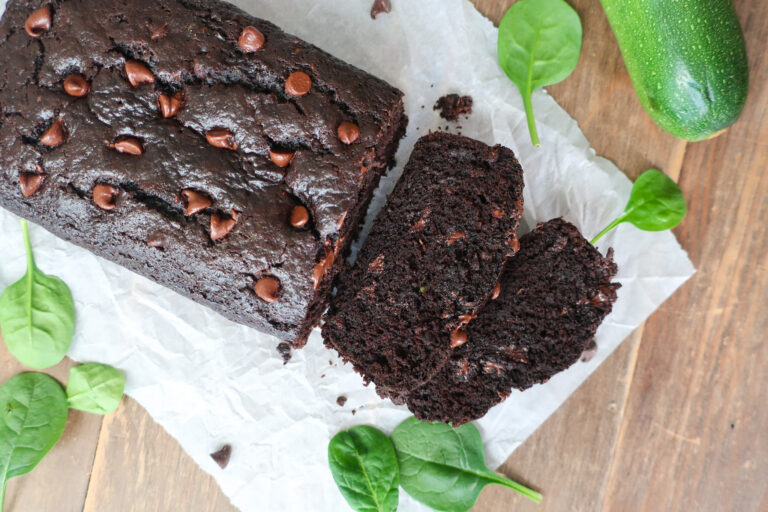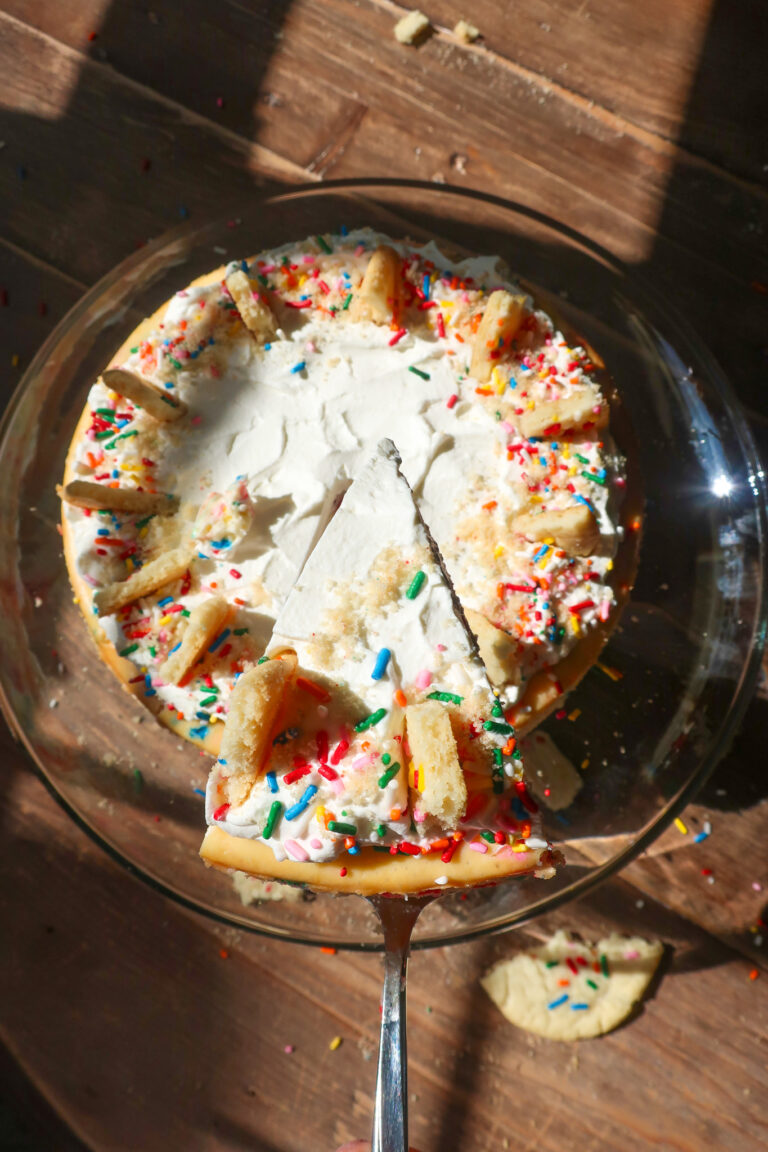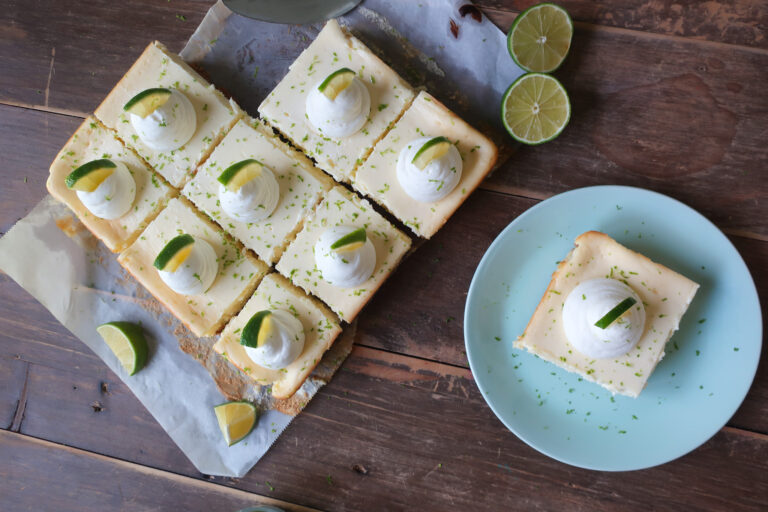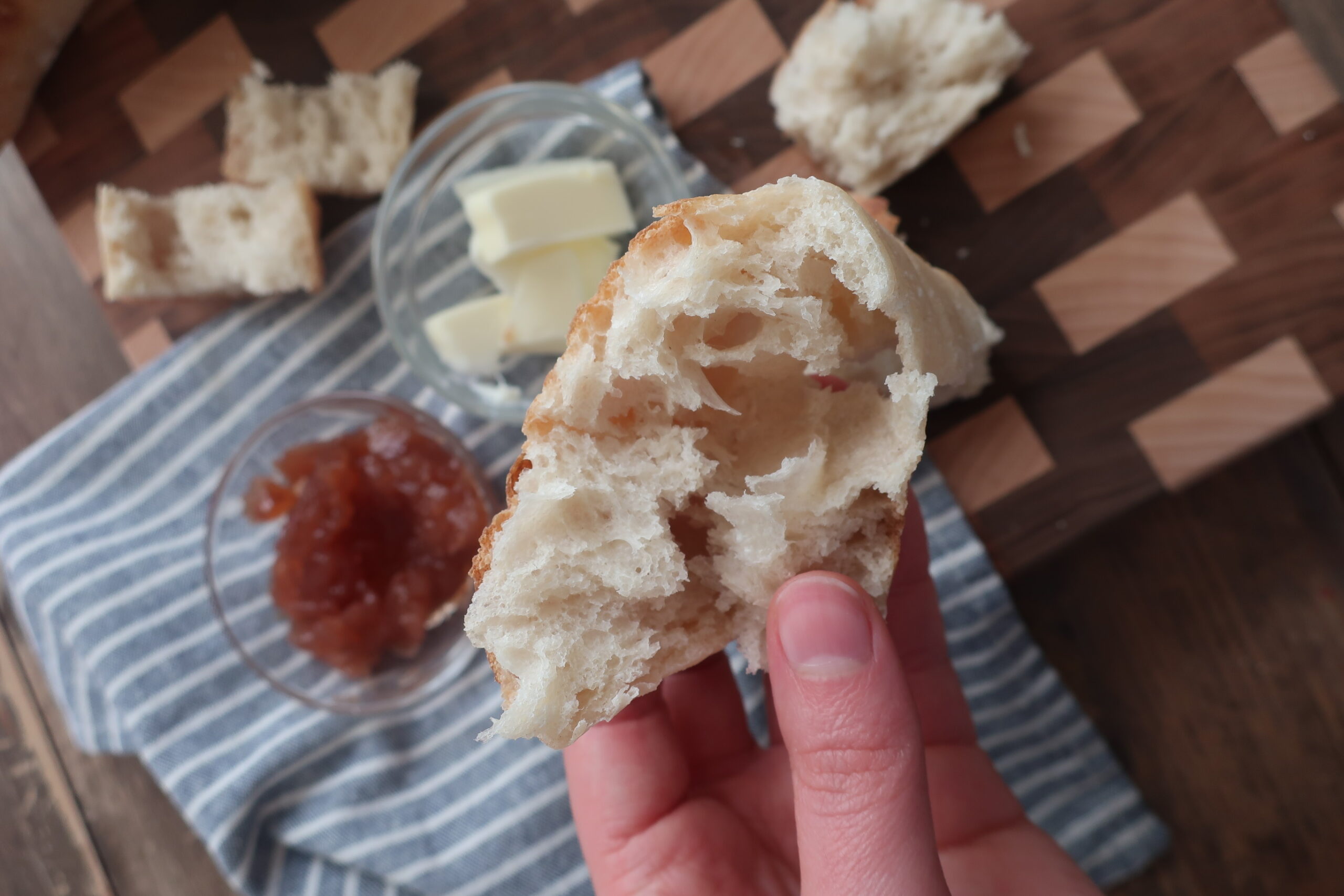
Perfect French Baguettes
Bread in general is great, but baguettes? Oui OUI! This recipe gives you the perfect French baguettes that will have you pretending you were walking out of a boulangerie in Paris and heading back to your flat looking out at the Eiffel Tour. WAKEY WAKEY, you’re in your own home silly.
With this recipe, I want you to remember: delicious dough takes time. You will need to prep your starter – Poolish – for this the night before as well as know that these delicious bread wonders will take you most of the day, between mixing, shaping, and rising times, before you’re ready to bake.
Lastly, a digital scale is required for this – precision is key my friends.
OK, now that you’re prepared… allons-y!
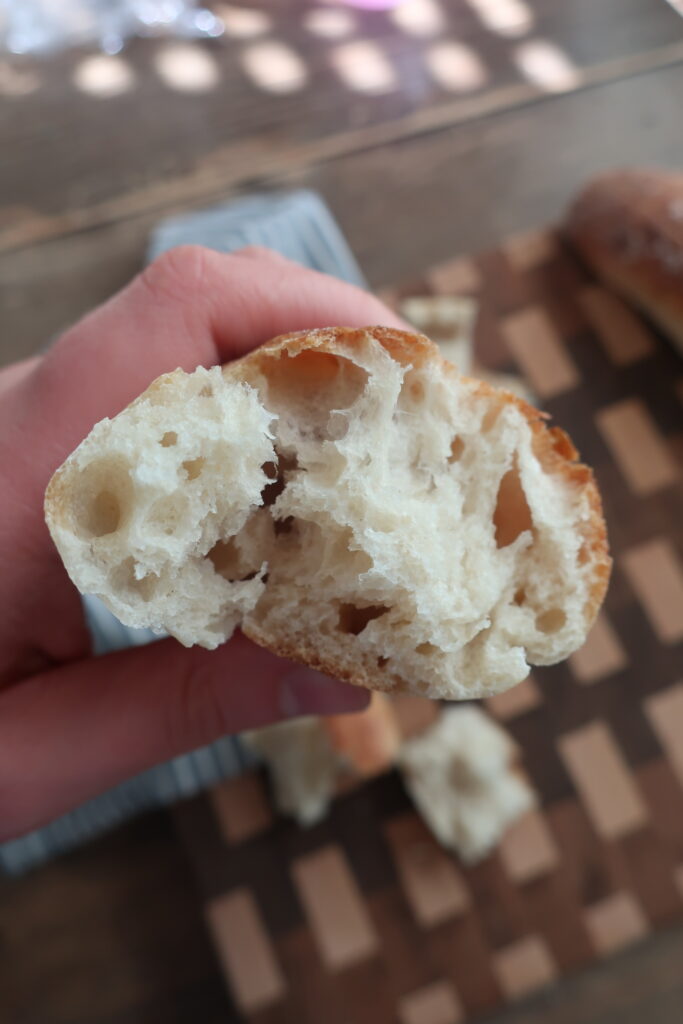
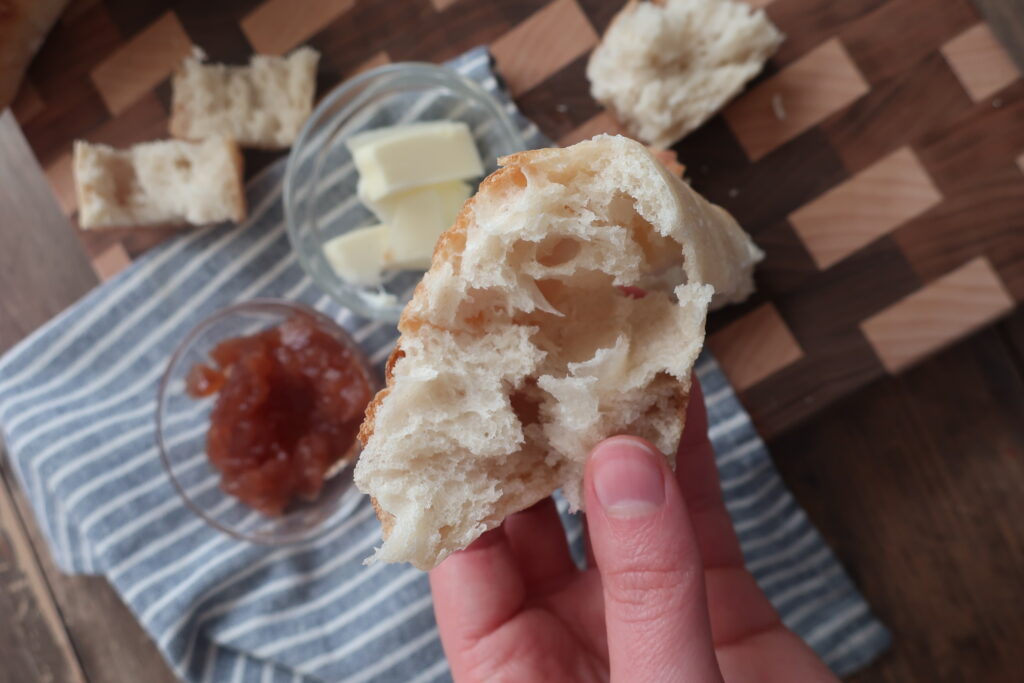
WHAT MAKES A BAGUETTE, A BAGUETTE?
(sorry, coming soon with a website update – full recipe available at the bottom!)
How to: (sorry, coming soon with a website update – full recipe available at the bottom!)
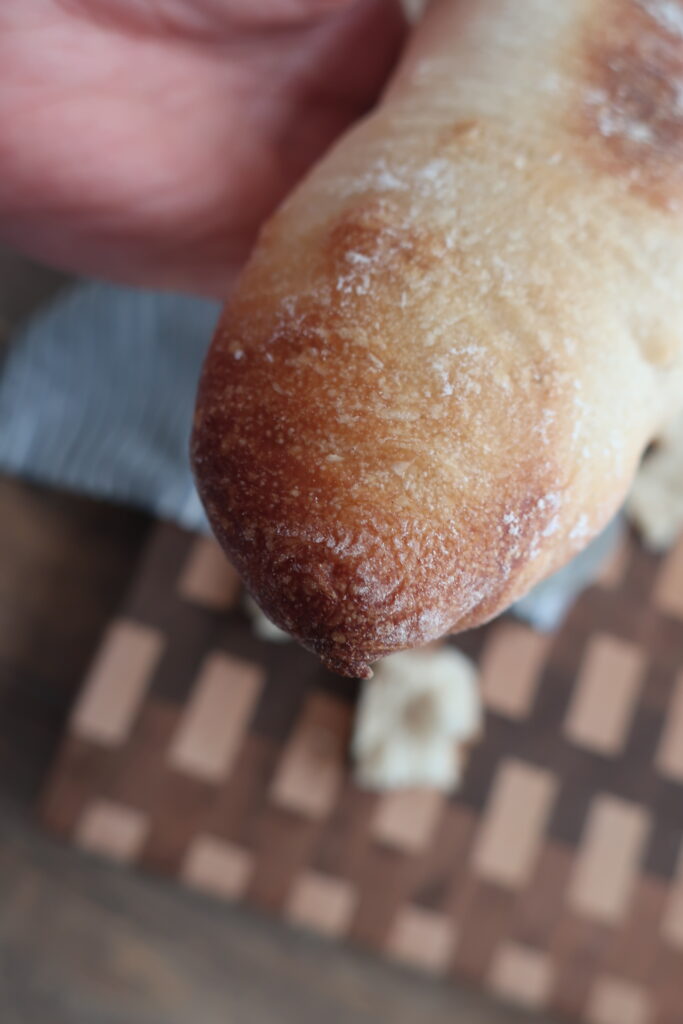
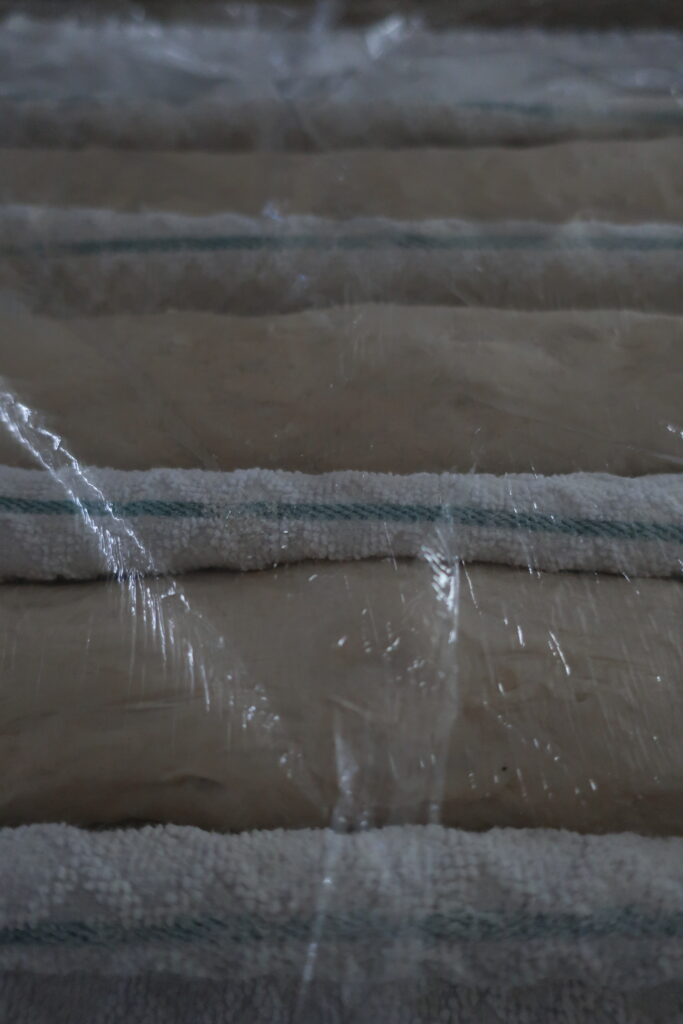
INGREDIENTS
- (sorry, coming soon with a website update – full recipe available at the bottom!)
(sorry, coming soon with a website update – full recipe available at the bottom!)
HOW TO MAKE FRENCH BAGUETTES
(sorry, coming soon with a website update – full recipe available at the bottom!)

3 reasons you’ll love these baguettes
TIPS & VARIATIONS
- (sorry, coming soon with a website update – full recipe available at the bottom!)
MAKING AHEAD & STORING
(sorry, coming soon with a website update – full recipe available at the bottom!)
MORE BREAD RECIPES
(sorry, coming soon with a website update – full recipe available at the bottom!)
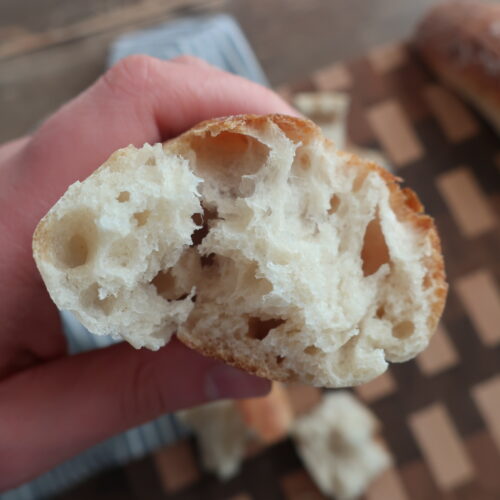
Equipment
- Mixer with dough hook OR mixing bowl
- Kitchen towels (2 – for rising and couche)
- Digital Scale
- Dough Scraper
- Parchment Paper
- Baking Tray
- Oven proof dish
- Bread Lame
- Cutting Board (to transfer baguettes)
- Cooling rack
Ingredients
- 136 g Bread flour
- 136 g Water room temperature
- 0.18 g active dry yeast 0.36 fresh yeast
- 172 g Water room temperature
- 318 g Bread flour + extra for flouring surface when/if needed
- 272 g Poolish
- 10 g Water warm but not hot
- 2.8g g active dry yeast 5.6g fresh yeast
- 9 g Salt
Instructions
POOLISH
- Mix together all ingredients, ok if lumpy, and cover with a damp cloth. Let sit for 12-16 hours at room temperature.
BAGUETTES
- Mix together 172g of water and flour. You can do this with a mixture with a dough attachment or by hand. If done by hand, squish the mixture together until it forms a dough ball. Cover and let it sit for 30 mins.
- After 30 minutes, add poolish to your dough. Use a scraper to mix through as it will be messy. If doing by hand, grand and squeeze the dough, but whether using a mixer or hand, combine until no more lumps.
- Once it’s no longer lumpy, keep mixing if using a dough hook but if doing it by hand, grab some of the dough and then stretch it over. Turning bowl and continuing. You’re ready to move on once the dough starts to “clean” the bowl. Aka there isn’t really any excess dough sticking to the edges and bottom of the bowl.
- In a small dish, stir together your 10g of water with your dough yeast and let it sit for five minutes.
- Once your dough is cleaning the bowl, add in the 10g water and squish it in. If using a mixer, mix for another minute or so until the dough and liquid aren’t sloshing around in the bowl.
- Dump the dough onto the counter (do not flour) and begin the stretch and fold method. See notes for a great video to watch on that technique but you will basically slap the dough onto the counter, stretch it towards you, then backward to the top of the dough, stretch it wide, grab the dough and repeat. That sounds ultra confusing so… just watch that video and it will help, I promise.
- The key is to stretch the dough. You’re looking for the stage where the dough – aka the gluten within – is nice and stretchy and not tearing as you pull. There may be times when you need to use your dough scraper to “walk the dog” and bring it back together before returning to your stretch and fold process.
- Turn the dough over so the working side – the sticky side – is facing up. Add in your salt and dimple it in with your fingers. Fold and knead the dough until it is nice and smooth and the salt is completely incorporated.
- In a clean bowl, transfer the dough, smooth side up, cover with a damp cloth, and rest for 40 minutes.
- After the dough has rested, dampen your fingers and perform your four coil folds. Lift up the front end, stretch it up, and then tuck the top towards the center, underneath itself. Turn the bowl 180 degrees and repeat. Turn the bowl 90 degrees, and repeat. Turn the bowl 180 degrees, and repeat. When you’re done you should have coiled in all sides of the dough. Cover and rest for 30 minutes.
- After 30 minutes, do another round of coil folds. Then cover and rest the dough for 20 minutes.
- After 20 minutes, perform the final coil fold (coil #3), cover, and rest until the dough doubles in size. Depending on the warmth of your kitchen this will likely take at least 45 minutes.
- Once the dough has doubled in size, weigh it and divide by three to portion out three baguettes. Gently roll each dough portion into small balls. Leave it to rest uncovered for 15 minutes, to form a skin.
- Before you begin shaping your dough into baguettes, create a couche cloth. Take a kitchen towel and lightly dust with flour (shake off any excess). With the cloth laying horizontally, lift up the back edge to create a crimp, this will form a back “gate” barrier for your first baguette.
- Working with one ball at a time, place the smooth side down and gently flatten it into a disc. Fold the top of the dough down to the center, press down, and the bottom of the dough up to the center, pressing down, forming a rectangle. You shouldn’t be pulling the dough. Repeat, folding the top of the dough to the center and the bottom of the dough to the center and pressing down on the seam after each fold. Then fold the top to the bottom and gently roll and extend the cylinder until the length of your baking tray. You can lightly flour your dough to roll it into a cylinder, if needed. Gently lift and place your dough on your couche cloth, seam side down, with the first crimp you made at the back. Once placed, make your next crimp so that there is a “gate” on both sides of your dough. Repeat the above shaping process, placing each baguette into the couche, with a crimp on either side, until you’ve finished all three. Be sure to pop out any air bubbles as you see them so you don’t have giant holes in your baguettes.
- Cover the dough and let sit for approx. one hour. To test if the dough is ready, lightly flour your finger and gently poke. If the indent slowly rises but not all the way, it’s ready for baking.
- Preheat your oven to as hot as it will go convection with an empty, heat-safe pot or dish at the bottom of your oven.
- In a pot or kettle, boil two to three cups of water.
- Gently pull your couche to separate each baguette dough from the other. Starting from the bottom, use a long board or cutting board and place it against the edge of one side of one baguette and then gently “flip” the baguette onto the board. Take it to your baking tray and in reverse, gently “flip” the baguette onto the far side of the baking sheet. You want the seam side down. Repeat until all baguettes are on one baking tray.
- Score your baguettes – this allows them to bloom as they bake – with short, two-inch lines straight down. You will probably get four to five scores on each baguette. The lines will almost overlap from one to the next.
- Once you’re ready, for this step you’ll need to move quickly so as to not lose any steam. Place your tray of baguettes on the third shelf down and then carefully pour a little over two cups of boiling water into your heat-safe pot at the bottom of the oven.
- Immediately close the oven door and bake for 10 minutes.
- Open the door, carefully remove the pan with water, AND drop the temperature to 392F convection. Bake for an additional seven minutes. These will be brown* in color.
- Remove from oven and immediately transfer to a wire cooling rack. Cool for at least 30 minutes before cutting.

